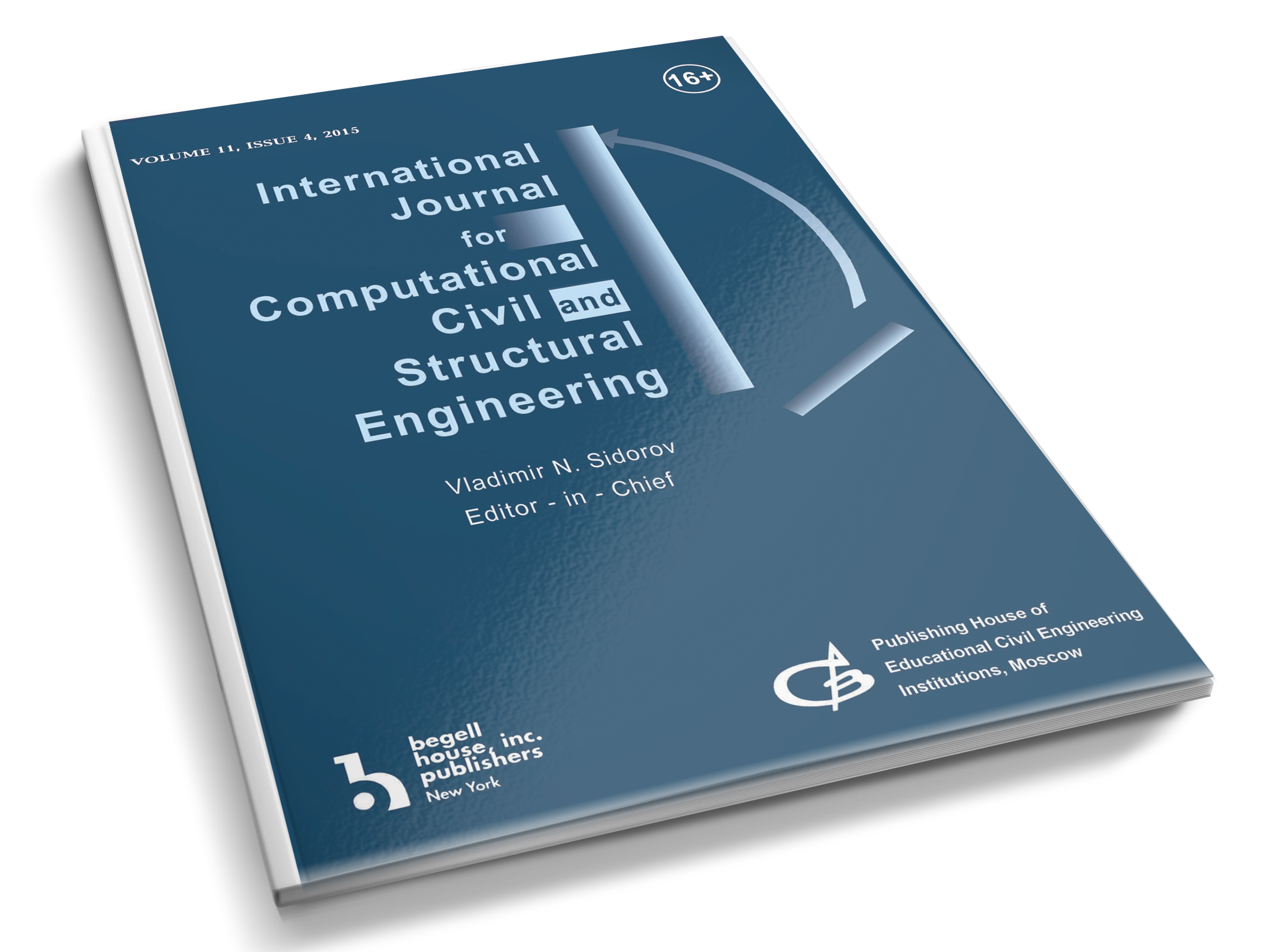Deprecated: AbookTableBook::_getAssetParentId(): Implicitly marking parameter $table as nullable is deprecated, the explicit nullable type must be used instead in /home/cvs-host/cvs.spb.su/docs/administrator/components/com_abook/tables/book.php on line 100
ANALYTICAL EVALUATION OF BASE CONTROL SYSTEM EFFECTIVENESS FOR REGULATION SEISMIC RESPONSE OF SUSPENDED EQUIPMENT BRACED WITH METAL FRAMES BY HYSTERESIS DAMPERS
International Journal for Computational Civil and Structural Engineering, 21(3) 105-120 (2025)

- Autors: : Анущенко А. М. [Aleksandr M. Anushchenko]
- Publisher: English
- Pages: 16
- N°: 63
- Library: Publications
- Year: 2025
- File: ANALYTICAL EVALUATION OF BASE CONTROL SYSTEM EFFECTIVENESS
Hits: 89
ABSTRACT
Equipment suspended from metal frames, such as steam boilers, usually has a bracing system that reduces the oscillation amplitude of equipment during an earthquake to technologically acceptable values. Hysteresis dampers arc often used as bracing elements, the installation of which affects frame dynamic response. If frame stress-strain state worsens when dampers arc used, it is advisable to additionally use a Base Control System (BCS), the optimal parameters of which must be selected during the design process. This ensures both the strength and reliability of building structures in case of an earthquake, and the most financially economical technical solution. BCS includes elastic spring elements that carry the load from the frame and equipment, and viscous dampers that decrease vibrations and increase the overall damping of the structural system. Detailed finite element models arc not applicable for optimization analysis purposes. It requires significant time and computing resources in conditions of the nonlinear nature of the constructive system. In this paper an analytical model of the "suspended equipment - frame" system with bracing hysteresis dampers and BCS is proposed. This model is easily implemented using MathCAD software programming tools. The paper also analyzes the possibility of implementing BCS for the purpose of seismic insulation of frames and boilers during seismic impacts of various frequency compositions. It is shown how different parameters of the seismic insulation elements can affect the efficiency of its installation. It is noted that it is necessary to determine the most optimal number of viscous dampers, at which the maximum decrease in the seismic response is observed.
DOI:01:10.22337/2587-9618-2025-21-3-105-120
 CKTI-Vibroseism Ltd.
CKTI-Vibroseism Ltd. 
